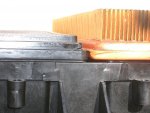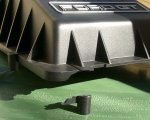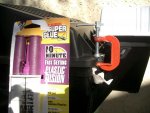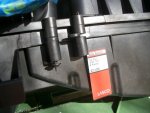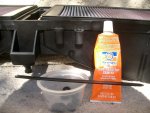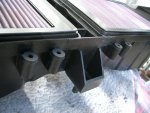Black2003Cobra
Well-known member
Reducing any restriction in front of the supercharger (high VE or not) will absolutely increase the mass-air flow rate. Try thinking about it this way; consider the extreme case wherein you completely block off the inlet and ask what your mass-air flow rate will be. Basically zero, of course.
At WOT the mass-air flow rate of a positive-displacement pump is the product of its volumetric-flow rate times the air density at its inlet. Put a restriction in front of it and the inlet pressure goes down. When the inlet pressure goes down, so does the air density at the SC inlet, and therefore, so does the mass-air flow rate even though the volumetric-flow rate into the SC doesn’t change. And as we all know, a lower mass-air (and fuel) flow rate translates to a lower amount of (indicated) power.
I don’t own a GT, but this I can tell you. I took out the stock filter and snorkel in my ’03 Cobra, (which also has a positive-displacement SC), and put in a drop-in K&N filter and gained ~10 rwHP. At a later date, I put a smaller pulley on and did a baseline. I then took out the drop-in filter, MAF screen, and stock air “box” and replaced it with K&N FIPK and picked up 23 rwHP over the baseline pulley run as measured on a Mustang Dyno. (Of course that doesn’t necessarily mean you guys would see that kind of gain. It would depend on how restrictive the stock system is, which I’m sure is better than the one on my car. Easy to check though…take the air filters out just for a quick test and see what you get.) Does it let more dirt in than the paper element? I’m sure it does. Enough to cause any damage? Couldn’t tell you, (but I’ve had it on the car for about 3 years now). One could always have their oil analyzed to see what’s getting in and how big the particulates are. Operating environment matters, of course.
At WOT the mass-air flow rate of a positive-displacement pump is the product of its volumetric-flow rate times the air density at its inlet. Put a restriction in front of it and the inlet pressure goes down. When the inlet pressure goes down, so does the air density at the SC inlet, and therefore, so does the mass-air flow rate even though the volumetric-flow rate into the SC doesn’t change. And as we all know, a lower mass-air (and fuel) flow rate translates to a lower amount of (indicated) power.
I don’t own a GT, but this I can tell you. I took out the stock filter and snorkel in my ’03 Cobra, (which also has a positive-displacement SC), and put in a drop-in K&N filter and gained ~10 rwHP. At a later date, I put a smaller pulley on and did a baseline. I then took out the drop-in filter, MAF screen, and stock air “box” and replaced it with K&N FIPK and picked up 23 rwHP over the baseline pulley run as measured on a Mustang Dyno. (Of course that doesn’t necessarily mean you guys would see that kind of gain. It would depend on how restrictive the stock system is, which I’m sure is better than the one on my car. Easy to check though…take the air filters out just for a quick test and see what you get.) Does it let more dirt in than the paper element? I’m sure it does. Enough to cause any damage? Couldn’t tell you, (but I’ve had it on the car for about 3 years now). One could always have their oil analyzed to see what’s getting in and how big the particulates are. Operating environment matters, of course.
Last edited:


